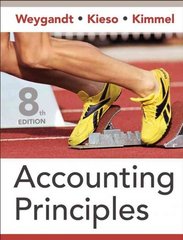Answered step by step
Verified Expert Solution
Question
1 Approved Answer
1. Using present value techniques to evaluate alternative investment opportunities. Fast Delivery is a small company that transports business packages between New York and Chicago.
1. Using present value techniques to evaluate alternative investment opportunities. Fast Delivery is a small company that transports business packages between New York and Chicago. It operates a fleet of small vans that moves packages to and from a central depot within each city and uses a common carrier to deliver the packages between the depots in the two cities. Fast recently acquired approximately $6 million of cash capital from its owners, and its president. Don Keenon, is trying to identify the most profitable way to invest these funds. Clarence Roy, the company's operations manager, believes that the money should be used to expand the fleet of city vans at a cost of $720,000. He argues that more vans would enable the company to expand its services into new markets, thereby increasing the revenue base. More specifically, he expects cash inflows to increase by $280,000 per year. The additional vans are expected to have an average useful life of four years and a combined salvage value of $100,000. Operating the vans will require additional working capital of $40,000, which will be recovered at the end of the fourth year. In contrast, Patricia Lipa, the company's chief accountant, believes that the funds should be used to purchase large trucks to deliver the packages between the depots in the two cities. The conversion process would produce continuing improvement in operating savings with reductions in cash outflows as the following. Year 1 Year 2 Year 3 Year 4 $160,000 $320,000 $400,000 $440,000 The large trucks are expected to cost $800,000 and to have a four-year useful life and a $80,000 salvage value. In addition to the purchase price of the trucks, up-front training costs are expected to amount to $16,000. Fast Delivery's management has established a 16 percent desired rate of return. Required a. Determine the net present value of the two investment alternatives. b. Calculate the present value index for each alternative. c. Indicate which investment alternative you would recommend. Explain your choice. Problem 2Using the payback period and unadjusted rate of return to evaluate alternative investment opportunities. Louis Gallo owns a small retail ice cream parlor. He is considering expanding the business and has identified two attractive alternatives. One involved purchasing a machine that would enable Mr. Gallo to offer frozen yogurt to customers. The machine would cost $8,100 and has an expected useful life of three years with no salvage value. Additional annual cash revenues and cash operating expenses associated with selling yogurt are expected to be $5.940 and $900, respectively. Alternatively, Mr. Gallo could purchase for $10,080 the equipment necessary to serve cappuccino. That equipment has an expected useful life of four years and no salvage value. Additional annual cash revenues and cash operating expenses associated with selling cappuccino are expected to be $8,280 and $2,430 respectively. Income before taxes earned by the ice cream parlor is taxed at an effective rate of 20 percent. Required a. Determine the payback period and unadjusted rate of return (use average investment) for each alternative. b. Indicate which investment alternative you would recommend. Explain your choice. Problem 3Using net present value and internal rate of return to evaluate investment opportunities. Veronica Tanner, the present of Tanner Enterprises, is considering two investment opportunities. Because of limited resources, she will be able to invest in only one of them. Project A is to purchase a machine that will enable factory automation; the machine is expected to have a useful life of four years and no salvage value. Project B supports a training program that will improve the skills of employees operating the current equipment. Initial cash expenditures for Project A are $100,000 and for Project B are $40,000. The annual expected cash inflows are $31,487 for Project A and $13,169 for Project B. Both investments are expected to provide cash flow benefits for the next four years. Tanner Enterprise's cost of capital is 8 percent. Required a. Compare the net present value of each project. Which project should be adopted based on the net present value approach? b. Compute the approximate internal rate of return on each project. Which one should be adopted based on the internal rate of return approach? c. Compare the net present value approach with the internal rate of return approach. Which method is better in the given circumstances? Why
Step by Step Solution
There are 3 Steps involved in it
Step: 1

Get Instant Access to Expert-Tailored Solutions
See step-by-step solutions with expert insights and AI powered tools for academic success
Step: 2

Step: 3

Ace Your Homework with AI
Get the answers you need in no time with our AI-driven, step-by-step assistance
Get Started


